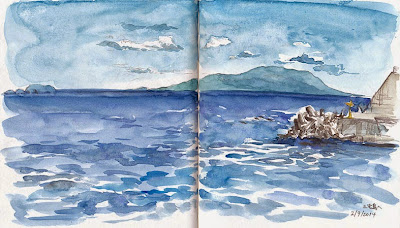
The Mumsnet book of Animal Stories
will be published by Walker Books on the 2nd October.
The cover illustration is by Briony May Smith.
わたしがイラストを6点描かせてもらった本の見本が届いた!
イギリスのお母さんたちが書いた子どものための動物の短編集で、コンペティションに入選した10作品をまとめたものだ。10人の新人イラストレーターがそれぞれの作品に絵を添えている。わたしがイラストを描いたのは、Alison Webb氏によるハリネズミの子どものお話。彼はお母さんが冬眠してしまったあとも、まだ眠る気になれず、森へと冬を探しに出かけていく。
10月2日にWalker Booksから出版される。日本のアマゾンでも取り扱っているようです。簡単なお話なので、英語の勉強にいかがですか?!

The book includes different type of stories about many kinds of animals from a lion and elephants to meerkats and bats. The story I made illustrations for is "The Hedgehog Who Wouldn't Sleep" by Alison Webb. It is based in nature and all the animals in the story are wild ones. So it was really a story for me!

A sneak preview of one of the spreads!
In the story, there is a scene of Little Spike, the hedgehog boy, rolls down a hill and be covered with snow and hits the tree trunk. I couldn't imagine how it would look like...
So I found my hedgehog, a spiky bur of Japanese chestnut! Luckily, it snowed heavily while I was working on the project in February. I made a snow ball with the bur in it and throw it to hit a wall.

And here you are, poor Little Spike covered with snow!!

I only had a month to make all the illustrations and since mine was in printmaking method, it was very hard. Worrying about me working until very late at night, my sweet mother made these cute hedgehogs to encourage me! One went to my grandma's place but the left one is with me still:)
イラストを描くためにハリネズミのことを調べていたら出てきた手芸サイトの型紙を使って、母がこんなのを作ってくれた。






































